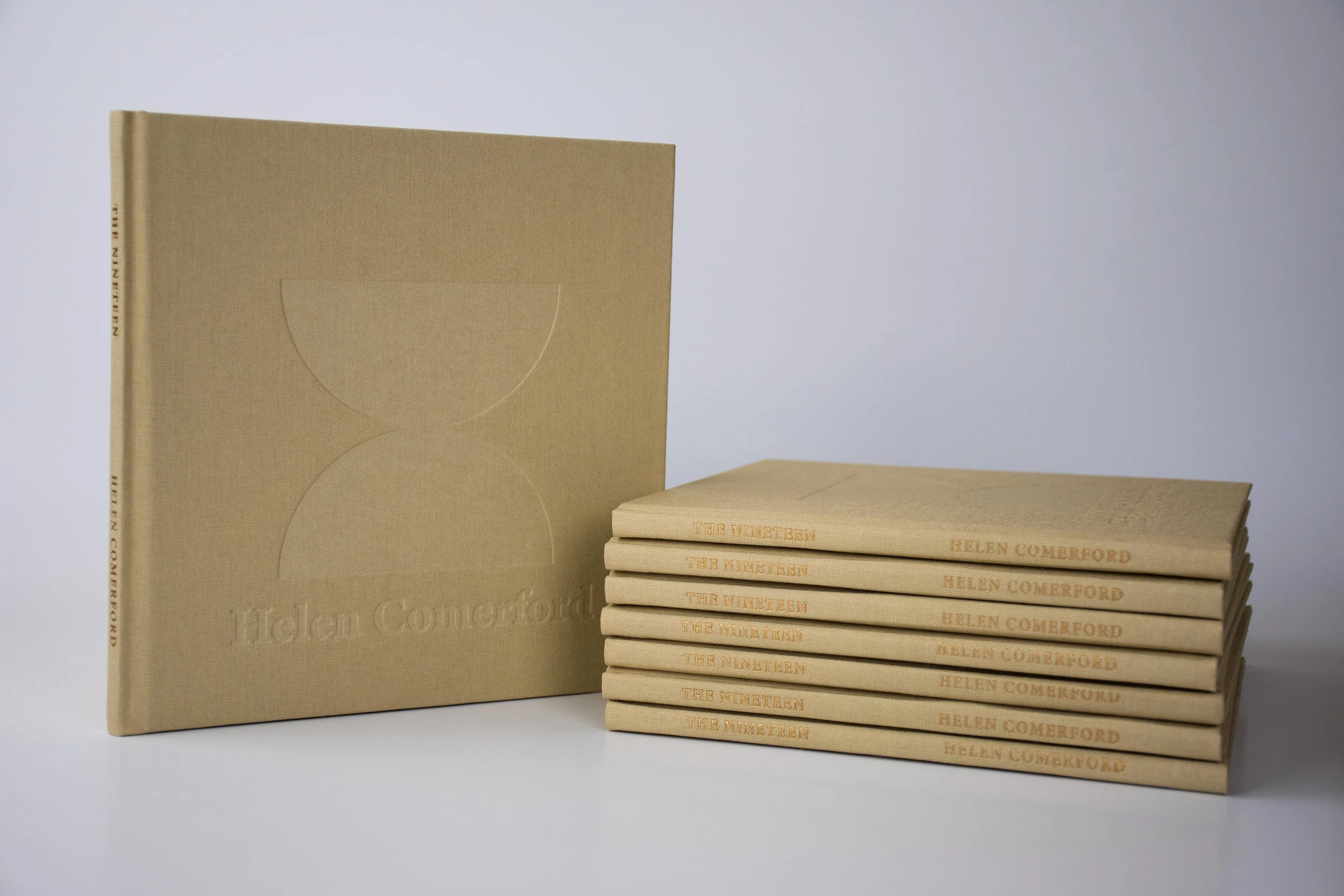THE NINETEEN
The Nineteen of the title – 19 1 m sq panels – derives from her long-term interest in Rudolf Steiner’s anthroposophical ideas, ranging across science, spirituality and pedagogy, specifically his “spiritual course” of 19 Class Lessons from 1924
Kilkenny Arts Festival 2021
ONE
TWO
THREE
FOUR
FIVE
SIX
SEVEN
EIGHT
NINE
TEN
ELEVEN
TWELVE
THIRTEEN
FOURTEEN
FIFTEEN
SIXTEEN
SEVENTEEN
EIGHTEEN
NINETEEN
THE NINETEEN BOOK LIMITED SERIES
Making Sense of the Maelstrom,
The Nineteen; new work by Helen Comerford
... I am with Ruskin in thinking that a picture is not by its very nature ideology’s mute servant, and has at its disposal kinds of intensity and disclosure, kinds of persuasiveness and simplicity, that makes most feats of language by comparison seem abstract, or anxiously assertive, or a mixture of both. ... But at certain moments and on certain subjects,... painting’s muteness gives it a peculiar advantage over the spoken word.1
1 T.J. Clark, quoted in Terry Atkinson, 1, first edition, 2020, con-fine edizioni d’Arte & Cultura, Monghidoro, 2020. P.7.
Paintings present as mute objects for contemplation. But their muteness should not be. confused with silence. Indeed paintings can often appear noisy, even clamorous (think of Delacroix’s Liberty at the Barricades, or Roy Lichenstein’s Wham), but the painting itself remains mute and separate, hugging its secrets to itself. It may even present a trail of clues to its meaning but our interpretations will never be confirmed by the painting, and only occasionally by the artist. Kant believed that the actual artwork emerged from the space between the object and the individual viewer, and did not reside fully in the object but rather in the rapport between it and the receptive viewer. It, therefore, offers something different to all of us, tantalising with its mystery, but giving the perceptive viewer the precious gift of something quite unique each time we look at it. And muteness can be electrifying, or provocative, dynamic as well as soothing, inspiring or celebratory.
All of these thoughts surfaced for me when looking at The Nineteen. The title’s absolute denial of adornment and its abstract nature are entirely in keeping with Helen Comerford’s down to earth approach to making the work. Yet there is nothing matter of fact about the paintings, and why nineteen? It’s an unusual number for a group of paintings and it doesn’t appear to have any widely recognisable symbolic or mystical connections. Did the artist run out of steam at nineteen? Hardly, because the choice of a number as a title suggests a deliberate sequential and finite arrangement, (nothing random, such as Untitled (no. 1, 2) etc.) especially as the first and last paintings seem to read as a natural beginning and end, while the careful viewer will note internal references that suggest a placing leading to and away from a centre point. The Nineteen were begun by Helen Comerford in 2019 to parallel an emotional and intellectual mapping of creation but were developed and completed during the long months of Covid-19 lockdowns in 2020 and 2021. Any reference to the naming of this strain of corona virus and the title of the series is purely coincidental. What is not coincidental is the increased intensity of the artist’s connection to the wider cosmic narrative during the long periods of isolation, fear, self-questioning and contemplation imposed by the pandemic.
Catherine Marshall
2021





















